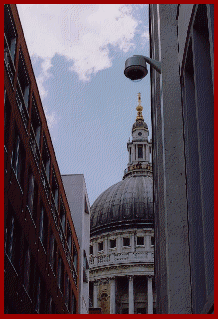| ||||||||||||||||||||||||||||||
Welcome to the | ||||||||||||||||||||||||||||||
 | ||||||||||||||||||||||||||||||
 | ||||||||||||||||||||||||||||||
All you need to know about lenses, | ||||||||||||||||||||||||||||||
If the Depth of Field is extremely long on ultra wide angle lenses, then at the opposite end of the focal length spectrum, with Telephoto lenses, it suddenly becomes extremely short. In fact, if you focus a medium telephoto lens on an object five metres away (at maximum aperture), the target only needs to move backwards or forwards a very short distance, to become totally out of focus. Now there is one rather interesting aspect of Depth of Field, which is rarely if ever mentioned. We know that the Depth of Field increases as the target point is moved away from the camera, but what most people don’t realise is that the DoF actually has a specific profile. If you focus on a point a few metres away, 1/3rd of the Depth of Field will be in front of the target, and 2/3rds behind. This simple concept applies whatever the distance from the camera, and with every lens. Whilst we already know that Depth of Field increases with wider lenses, there is actually one specific thing that you can do to increase this, to produce sharper images for longer, within the ‘Cone of Containment’. By simply closing the aperture (iris) ring on the lens, the Depth of Field will continue to increase. Although this function is vitally important to achieve good target focus, you must remember that as the aperture is closed past the mid point (around f5.6 - f8), although the Depth of Field continues to grow, the optical performance of the lens will begin to suffer until a point where the image degrades rapidly; usually at or around the smallest of aperture settings, f16 - f22. If you consider the benefits of closing a manual iris lens to achieve greater Depth of Field, and enhanced optical performance, it quickly becomes obvious that you either a) need to increase the ambient light level, b) use a much higher sensitivity camera, or c) a combination of the two to achieve the best possible results. With this in mind, sticking an expensive ‘auto iris’ lens onto an average performance camera, may well prove to be a more expensive option, which based on almost total ignorance of basic optical principles, produces a vastly inferior quality of picture above that which could so easily have been achieved. | ||||||||||||||||||||||||||||||
 | ||||||||||||||||||||||||||||||
IMPORTANT: No material may be reproduced, copied or redistributed from this site, © doktorjon.co.uk 2004 - 2008 Homepage...:...Gateway...:...Technical Gateway....:....Quickfind Index....:....Equipment Directory | ||||||||||||||||||||||||||||||

